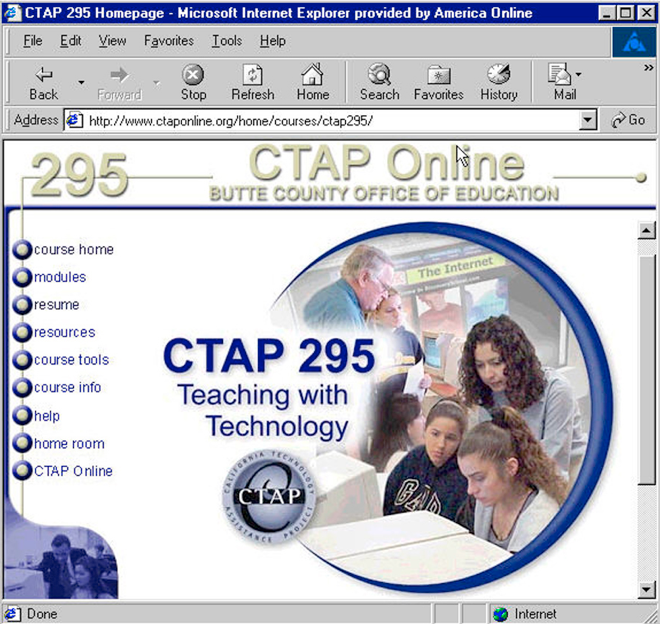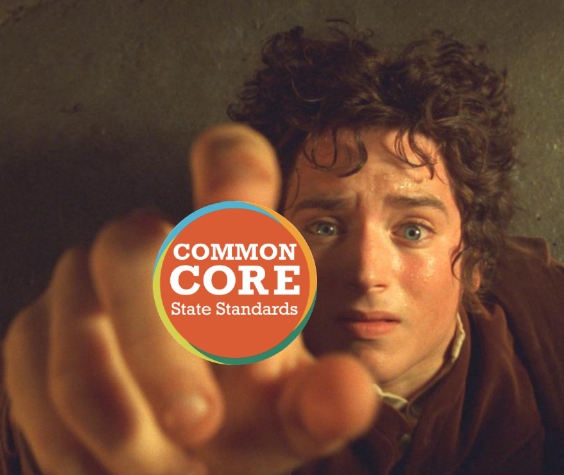Sometimes I am not even sure where to begin. Here are some examples of a subject directories from websites where educational resources are organized and provided for teachers to browse through to find things they are looking to use in class…or perhaps parents are wanting to help their kids with homework:


Depending on who you talk to in our discipline, they are referred to as Ontologies, Taxonomies, Controlled Vocabularies, Subject Directories, Topic Lists, or as one specialist emailed me, (in response to my question of, “Do you know of a widely accepted/adopted list of educational topic terms that span K-12 we might deploy as a start point to our work with Learning Registry?”)
I am not sure I understand your question about Topic…A more precise way to define the ’topic’ is with the AlignmentObject in LRMI / Learning Standard Item Association in CEDS, I.e. To show relationship to one or more competencies defined in a set of learning standards or other educational framework. With “Learning Standard Item Association Type” (LRMI: Alignment Type) specifying that the resource “teaches”, “assesses”, etc.
So….that’s awesome. Here’s the deal, a primary teacher wants to find something online that has to do with the role Bees play in the pollination process. And of course, in the Next Generation Science Standards (as in many standards that pre-dated them) there is a specific calling for students to know, “Plants depend on animals for pollination or to move their seeds around.” (Gr. 2).
And let’s say, somewhere else, a really cool project like Wonderopolis produces a great set of resources to help teachers cover just that topic with the following item: http://wonderopolis.org/wonder/how-many-flowers-can-a-bee-pollinate/
So then, we here at Navigation North, are asked to help the USDOE make an easy tool for agencies like Wonderopolis above, to categorize and share their great resources so that they appear in common areas where lots of teachers are looking for things. So you end up looking at two (2) things…
- What would be the typical topic/term, that teachers would naturally select, to find that above resource on Bees?
- Once you’ve decided on a good term or set of terms (Pollinators, Bees, Insects, etc), you then have to determine what Wonderopolis and other sites with educational materials use as terminology to categorize their materials.
So in order to support this connection, we determined that the tool we are designing needs its own list of subjects as a search framework to help find the HUNDREDS OF THOUSANDS of educational resources that are published by the HUNDREDS of projects and agencies that create them. The list needs to be well-understood, clear, and fairly open so that groups submitting their materials can cross-connect their materials to it easily. As such, Learning Registry, becomes a centralized data-structure for information about all of these great resources out there on the web. But making that list is more difficult than it first seems. Not that the average person working in education can’t noodle through creating a typical topic director of subjects, but it becomes an issue of making sure your list is broad enough to accommodate everything out there, and then you have to contend with the question of how specific, or granular to make your list of subjects.
There is English stuff, Math stuff, Science stuff, and History stuff right? Sure, that’s a good start. Oh but, you must remember Foreign Language stuff, Physical Education stuff, Music stuff, and Arts stuff. Oh, don’t let us forget Career and Technical Education which then has sub-sets for items like Engineering, Hospitality and Tourism, Health Careers, Auto Technology, Culinary, Interior Design, Animation Design, etc, etc, etc. AND each of those areas, let’ say Math, can then be broken down into Algebra, Geometry, Statistics, Ratios, Shapes…which can be broken down into Circles, Spheres, Cubes, Triangles….which can be broken down into Right Triangles, Isosceles Triangles, or Equilateral Triangles, etc, etc, etc.
So, we can just try to make up our own most comprehensive list of educational topic terms that most teachers would be able to intelligently navigate to find what they need (Say a Bee resource for 2nd grade). And then consider how an agency or project might tag or identify that same resource and hope there is some congruence. Ya right! The topics list we found in existence on the tool handed off to us was like this as shown below (Yes, you are reading it correctly below with Countries and Continents then broke out as Africa / Arctic, Antarctica /Other Countries & Continents then Foreign Languages <no sub-sets included> and then World History differentiated by China / Russia, Soviet Union / Other, World History) It’s just random and odd in its designations.

In the end, nobody seems to be able to point us to a fairly clear, comprehensive, agreed upon, or just generally acceptable list of terms for education to define the types of activities, resources, lessons, worksheets, images, handouts, or whatever. It shouldn’t be that complex, let’s just categorize stuff in relation to whether its helping students learn osmosis, the American Revolution, exponents, or appropriate use of metaphors and similes. I mean, this process should be less of a mountain, and more like a mole-hill. (Get it?)
In the end, we created our own list researching and drawing heavily off of many known lists and related efforts, the CCSS, the NGSS, the C3 framework, some work from Australia, the Common Education Data Standards, the Learning Resource Metadata Initiative, and some other weird little fiefdoms. Expect what we publish to be categorized under “Education-related work that should have been concluded 30 years ago that took place between the Arctic and Antarctic in a language other than Chinese that did not lend to the tangling alliances that led to World War II or involve the Pythagorean Theorem”
Here is a prototype of our list as a google spreadsheet for comments and feedback.
Click here for Subjects List


 wants to learn how to find the Area of a Circle (Which happens to be a grade 7 Common Core Math Standard), you can certainly get returns like these that are good and free:
wants to learn how to find the Area of a Circle (Which happens to be a grade 7 Common Core Math Standard), you can certainly get returns like these that are good and free:



 Grade 7 (or what they deem 111.23 Grade 7… ahem’ your database is showing) and get a return of 43 standards. And of those standards only 1 has any resources aligned to them. 42 standards have no resources, but 1 of them has 2…for all of 7th grade. And they look like this:
Grade 7 (or what they deem 111.23 Grade 7… ahem’ your database is showing) and get a return of 43 standards. And of those standards only 1 has any resources aligned to them. 42 standards have no resources, but 1 of them has 2…for all of 7th grade. And they look like this:


 Here’s what I DO find intriguing about these MOOC environments and instructional approaches…Some of them, like Udacity, do a nice job with their visual display in which the instructors draw out problems and concepts on a clear glass-like surface and then render those same handwritten items as quiz questions for the learner response by clicking and answering on the screen in which they were drawn.
Here’s what I DO find intriguing about these MOOC environments and instructional approaches…Some of them, like Udacity, do a nice job with their visual display in which the instructors draw out problems and concepts on a clear glass-like surface and then render those same handwritten items as quiz questions for the learner response by clicking and answering on the screen in which they were drawn. We ultimately supported upwards of 40,000 educators across the state of California in meeting their training needs through completely asynchronous, autonomous online courses. There was lots of content, too many threaded discussions, quizzes, and portfolios of “learning artifacts”. I’ll admit we did some janky stuff in the name of online learning for sure. But in those early years, we were excited about the prospects of creating more authentic, rich, personalized learning experiences for learners with each evolution of technology. We knew that every year the versatility of assessments, the amount of access to rich, non-centrally produced content, and the levels of integrated learner data would increase and aid in the evolution of online learning.
We ultimately supported upwards of 40,000 educators across the state of California in meeting their training needs through completely asynchronous, autonomous online courses. There was lots of content, too many threaded discussions, quizzes, and portfolios of “learning artifacts”. I’ll admit we did some janky stuff in the name of online learning for sure. But in those early years, we were excited about the prospects of creating more authentic, rich, personalized learning experiences for learners with each evolution of technology. We knew that every year the versatility of assessments, the amount of access to rich, non-centrally produced content, and the levels of integrated learner data would increase and aid in the evolution of online learning. So what new things have MOOCs introduced to an ongoing revolution in education? Well, I guess per their title, they are Massive, their Openness seems to be questionable in most instances, they are obviously Online, and they do possess all the traditional rigidity of a Course…So maybe MOOCs are basically what they claim to be, a scalable machination of the traditional post-secondary education system. And maybe the ideals of radically transforming the educational experience, that many of us have long attributed as being most attainable in the digital environment, have been mistakenly placed upon MOOCs.
So what new things have MOOCs introduced to an ongoing revolution in education? Well, I guess per their title, they are Massive, their Openness seems to be questionable in most instances, they are obviously Online, and they do possess all the traditional rigidity of a Course…So maybe MOOCs are basically what they claim to be, a scalable machination of the traditional post-secondary education system. And maybe the ideals of radically transforming the educational experience, that many of us have long attributed as being most attainable in the digital environment, have been mistakenly placed upon MOOCs.



